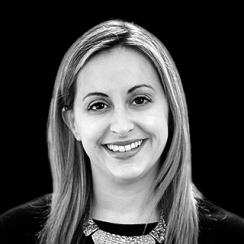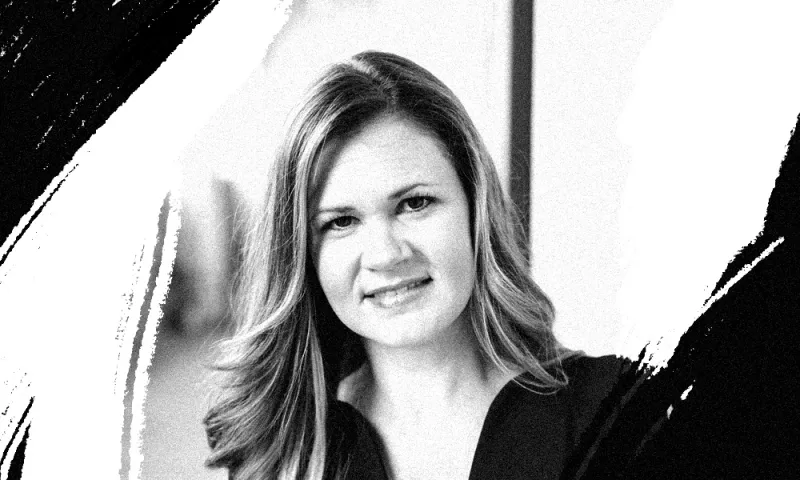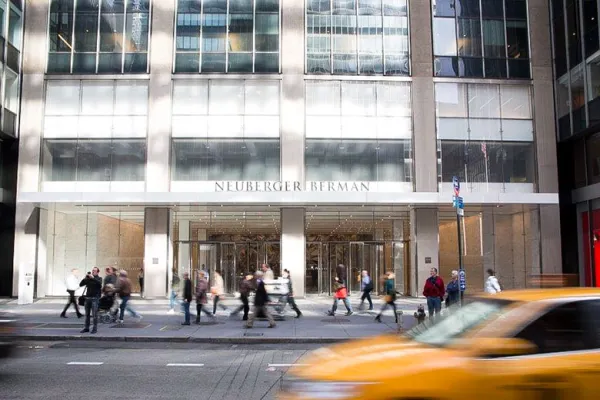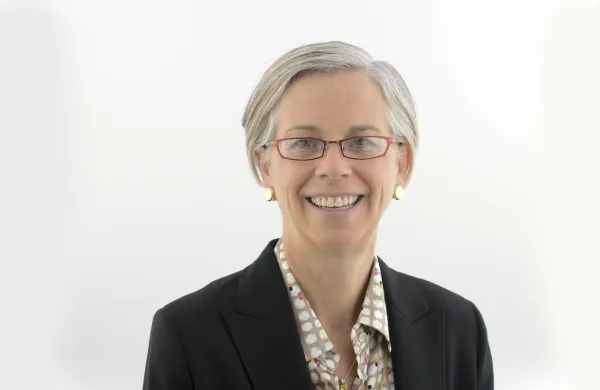When starting her career sixteen years ago, Nina O’Neal joined the glamorous ranks of fashion PR in New York City. She soon realized that a Devil Wears Prada lifestyle made for a bad fit.
So she turned to finance, first as a receptionist at an investment bank, then as an institutional associate at Jennison Associates before becoming a financial advisor at Merrill Lynch. In the fall of 2009, when fallout from the financial crisis was still widely being felt, O’Neal left Merrill to join Archer Investment Management in Raleigh, North Carolina as co-owner.
In her 20s and starting a family, O’Neal had her hands full. To succeed at home, and work, she recognized that Archer’s policies required flexibility. With founder Matt Archer, the pair established a framework that balanced rules and adaptability. Their process for client servicing made each accountable for different responsibilities yet allowed them to tag-team on many tasks.
Today, with a focus on high-income professionals and small business owners, Archer has more than 150 clients in roughly 15 states and manages about $90 million in assets, according to O’Neal. Archer Investment Management is an independent RIA. O'Neal and Archer are registered through Triad Advisors.
O’Neal’s latest industry initiative, The Female Advisor Network, launched in April. The network aims to empower female financial advisors and expand female visibility in the industry. Below is our discussion, edited for length and clarity.
What were some early challenges you and your business partner faced when launching Archer?
We were trying to establish a brand with no previous brand identity. My partner and I were both young, 28 and 32 roughly, and we found ourselves in this unique situation of being two co-owners and senior advisors. We only had one staff member at the time and we were trying to build a firm that had brand identity, and fighting the financial crisis at a time when there was a lot of uncertainty and mistrust in our industry. Pretty soon after we started working together, in 2010, I became pregnant with my first child, bought a house, and started a home renovation.
What personal challenges did you face?
My pregnancies were very difficult with my two boys, who are now eight and five. While I was pregnant I had to continue to talk to my potential clients who wanted to know: was I still going to work? What was my plan? I was already fighting a credibility issue as a young female, but then on top of that I was pregnant and had to deal with people wondering if was I even going to come back to work with them when that was finished. So it was really valuable having a partner in that and having someone else at the table that at least could say we could provide continuity for when I was away.
Because we were so young in the business trying to build up our client base, I couldn't really take a long maternity leave. I was only out six weeks with my first son and eight weeks with my second who was born in 2014, so that was a huge challenge having to fight through those days with no sleep and newborn issues. Your body changes a lot. And trying to get back into good condition and sit in long meetings while working long hours was a huge personal challenge for me. I have a lot of sympathy and empathy for women that are working, going through the same thing, regardless of their field, but I think it's particularly difficult as a young female financial advisor.
How did you handle the growth and scale of your business?
There’s a point where you have to answer: what does your team look like? Everybody can't do everything. We do a wide variety of things for our clients. We don't just manage portfolios. We also do financial planning and help with tax minimization and corporate benefits plans. We try to be their personal CFO and help with anything else they could need. Being diligent about delegating was difficult in the beginning for me. But defining roles and responsibilities for how many people are needed on the team based on the company’s size at different points was how we approached it.
Today, my partner and I have grown to realize that we cannot both do everything. We're both equally experienced and knowledgeable, but the catch is that it’s not easy to scale if we're both doing the same thing. So to combat that, we have an organizational chart that we review every year and everybody has their departments and that's what you're in charge of and those are your responsibilities and roles within the firm. It helps keep our partnership in check. It's never who's doing more work. Everybody just has different responsibilities and it's not a matter of whose clients are whose. We share everything 50/50 so it truly matters who's responsible for that task or that part of a client relationship.
What is your investment philosophy?
We believe in a core-satellite approach and we mostly manage discretionary portfolios. We have a small amount of third-party money managers, but the bulk is under our management's discretion, which is a loose model based on the client's risk tolerance. It might be sectors, it might be using ETFs, and mutual funds. We have very few individual securities. We definitely capture growth, but we're always managing the downside.
We look at investments from a top down perspective and try to figure out globally and nationally what trends are going on. And we really like using alternative investments for a portion of the portfolio for the right investors where it's appropriate. We like that diversification. We try to find some uncorrelated assets that don't fluctuate with market movement and so that's been a big thing that I think is a differentiator for us versus maybe some of the more traditional RIAs. We do use products exposed to oil and natural gas, futures, and real estate investment trusts.
What is your take on the markets today?
We've definitely had a great year compared to last year. I think volatility will continue. With an election year coming up, a lot of companies sit and wait to see who's going to be in power and then what that means for maybe their business decisions when you look at large corporations. I don't necessarily see any reason to panic or to move to a recessionary thought process in our portfolios.
What are your clients looking for today versus five years ago?
They're looking for advice and understanding, which is now a more important part than even the investment management. We have a lot less conversation around holdings, allocations, and performance than we are around what's going on in their life and just how they're using their money and what it's intended for. We’re seeing the investment piece more as just the vehicle and the planning being really the intentional conversation.
Let’s pivot to the Female Advisor Network. How did you get started and why did you think the wealth management industry needed this?
The need really drove the set up. I felt this void my entire career since I started as a young, female advisor. I never had a community in the early days. As I got older, I created one for myself. I kept hearing a similar conversation with women around the country that they were lacking community, especially when they were getting started. I could hear in their stories that the confidence wasn't there because they just didn't feel like they were what every other advisor looked like. They were constantly trying to prove themselves.
As I became part of other organizations, I still didn't see a cohesive community for all advisors that had continuity beyond just maybe a two or three day conference. Based on what I had seen and the conversations I had had, we were all having a lot of these same shared experiences separately. So I decided it was time to just do it myself. Initially, I was going to host a retreat and then as I was planning it, I realized that three days together doesn't solve an industry problem. I thought we could do more. I laid out this business plan of what I envisioned as far as programs and opportunities for education and development of other women and we finally launched this past April.
How is the network actually structured?
It's a virtual and physical community that is constantly evolving. We're about to release our own closed network, similar to a social network like Facebook. The mission is to provide collaboration, education, mentorship, and support. All of the programs are built to do that in some way. The retreats are designed so they're not like a conference. They're designed for personal and professional growth in a hands-on workshop environment.
Tell me more about the retreat.
We held the first one in late September in a beautiful environment. The concept is that it’s hosted in a serene setting where women can get away from their family obligations for the weekend and take time for themselves. There's space in the agenda for whether you want to go to your room and relax, meditate or do yoga. You could take a walk with a friend. Some of us went shopping and had wine. You can do whatever you want in the down spaces and have some freedom for that collaboration, too, instead of packing your day with nonstop activities.
What else is unique about the network?
Our member directory fosters collaboration within the community. If someone is say in Raleigh, they could look me or other advisors up and if they didn’t have dinner plans could try to connect with a local member. Next year, we will offer more Conference Connections and Community Connections so that when traveling, members can meet. I have ambassadors in different markets that will lead their own area and coordinate a time and place to meet. Then we’ll promote the event through our network. But arguably my favorite part of the program is that we have a mentorship and accountability partnership. Our members can apply to be a mentor, mentee, or accountability partner by completing a profile. We garner a lot of data about them then put them together and send them a 12-month guided workbook.
What’s in the workbook?
It's a structured program I wrote. For both the mentorship and accountability partner workbooks, the workbook contains a time commitment expectation, questions to guide the program and conversation, and space for notes for each call or meeting. We've partnered women together across the country. We’re working a great deal in the partner marketplace that showcases products and services for financial advisors with promotional pricing or discounted pricing for the members for things like financial services technology, coaching programs, IT consulting, and administration.
So if a member joins and only uses one of our discounts, she's pretty much just made a positive impact on the investment in the community. I've been thrilled with the interest and engagement from our industry with wanting to be a part of the marketplace and support our women members.
You’re helping to get female advisors out on the speaking circuit. How are you doing that and why is that so important?
We want more women on stage. It's such a catch-22 because conference coordinators want more women on stage. I don't think there's an intentional movement to leave women out, but when you're looking at getting industry peer speakers, women just aren't as interested and there are a lot of reasons behind that. I've had so many people come to me from reporters to event planners, saying, "Who are the women out there? We want to get their voice in media and have them at the podium." I felt like I can really create an opportunity for the members and for the people that come to me.
What are you passionate about and how does that translates into your work?
Outside of my family, where we’re at baseball games all the time with my two boys, I love to travel, immersing myself in other cultures. I'm an avid reader and usually reading multiple books at the same time since I was an English major and creative writing minor. I also love food, cooking, and trying new restaurants.
What has kept you motivated throughout your career?
The feeling of making a difference whether that's in clients’ lives or industry-wide. I just have this relentless drive to always do better. Can we improve our processes, can we do more for more people? Can we provide better service? It’s about not being complacent and continuing to improve myself, our business, our team, and our industry.







